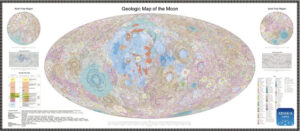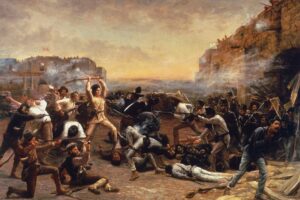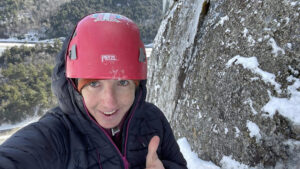Imagine a hunter-gatherer society of 10,000 years ago. What do you picture? Crude dwellings and stone tools, certainly. Lots of fur, lots of blood. And rigid gender roles, right? The men go hunting for meat, and the woman forage, dig, weave, watch the children, and attend to other domestic tasks.
It’s a longstanding assumption that such specific and narrowly defined gender roles were an inescapable fact of the early human experience. Scientists drew that conclusion from archaeological data and observation of modern hunter-gatherer societies. But a new study published last month in PLOS ONE flips that assumption on its head. And it does so with information that’s been around for hundreds of years.
Biological anthropologist Cara Wall-Scheffler and her team conducted an exhaustive survey of hunter-gatherer observations from as far back as the 1800s. Many researchers rely on summaries of such observations when drawing conclusions, NPR reported. But Wall-Scheffler and her co-authors went back to the original data.
“We decided to see what was actually out there” she told NPR. “Our goal was to go back to the original ethnographic reports of those populations and see what had actually been written about the hunting strategies.”
Their findings showcase how possible it is for cultural bias to warp the scientific process.
Blinded by culture
“Of the 63 different foraging societies, 50 (79%) of the groups had documentation on women hunting. Of the 50 societies that had documentation on women hunting, 41 societies had data on whether women hunting was intentional or opportunistic,” Wall-Scheffler and her co-authors wrote in the conclusion of their paper.
“Of the latter, 36 (87%) of the foraging societies described women’s hunting as intentional, as opposed to the 5 (12%) societies that described hunting as opportunistic. In societies where hunting is considered the most important subsistence activity, women actively participated in hunting 100% of the time,” they continued.

Anthropologists have long relied on observations of modern hunter/gatherers to draw conclusions about the past. But cultural bias can warp observations…Photo: Shutterstock
So if this is the data that’s been around all along, how could scientists draw the conclusion that women held strictly gathering roles? Good old-fashioned cultural bias and self-reinforcing ideas.
Gender roles were strict in the European societies that spawned the scientists who first observed hunter-gatherers. Although they wrote down what they saw accurately, their own culture warped the conclusions they drew from their observations. And as the idea of men as hunters and women as gatherers became calcified in the zeitgeist, few scientists challenged those notions.
Assumptions
One of the researchers who did is Randy Haas, an anthropologist at Wayne State University. He told NPR that he’s seen bias happen not only in the interpretation of observational data but also at dig sites.
“We all just assumed this individual was a male,” he said of a set of human remains found with an extravagant hunting kit in Peru. “Everybody is sitting around, saying things like, ‘Wow! This is amazing. He must have been a great hunter, a great warrior. Maybe he was a chief!'”
A later study revealed the skeleton was a female, prompting Hass and colleagues to reexamine other remains where earlier researchers had made assumptions on gender. It turns out that 11 of the 17 early American burial sites featuring hunting tools the team examined contained female skeletons. And the tools contained within weren’t for hunting rabbits.
“Large mammal hunting during this time in the Americas was a gender-neutral activity, or at least nearly so,” Hass concluded.
“We reanalyzed the big-game burials from North and South America and prehistorically showed that women and men were 50/50 big-game hunters,” Wall-Scheffler added in an interview with Live Science.
The new perspective has the potential to trickle into popular culture and make changes, hopefully for the better, history professor Kimberly Hamlin shared with NPR.
“I think that next to the myth that God made a woman from man’s rib to be his helper, the myth that man is the hunter and woman is the gatherer is probably the second most enduring myth that naturalizes the inferiority of women,” she said. “[This new research is] really going to encourage us to call into question a lot of these ideas about what men and women are supposedly naturally like.”






